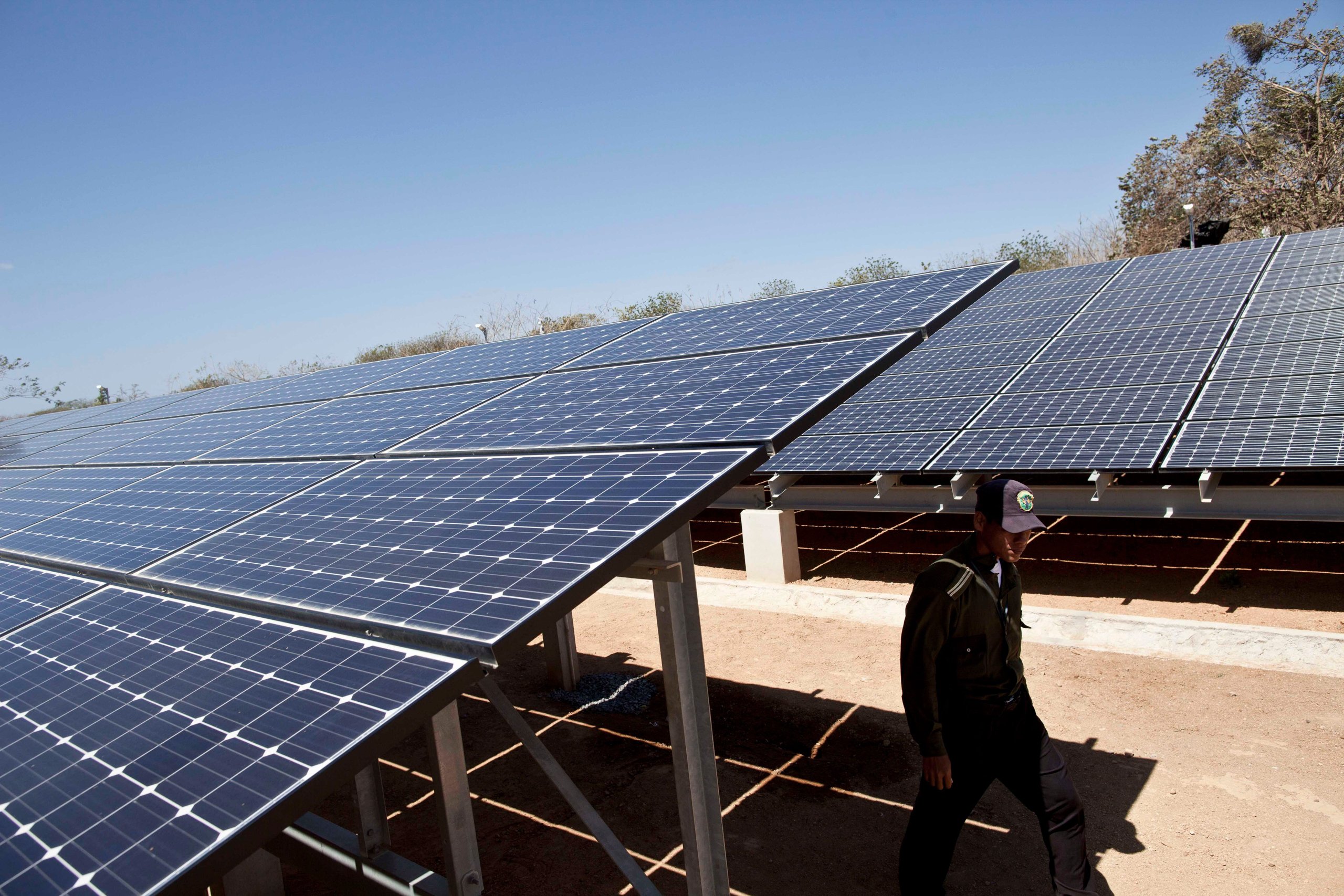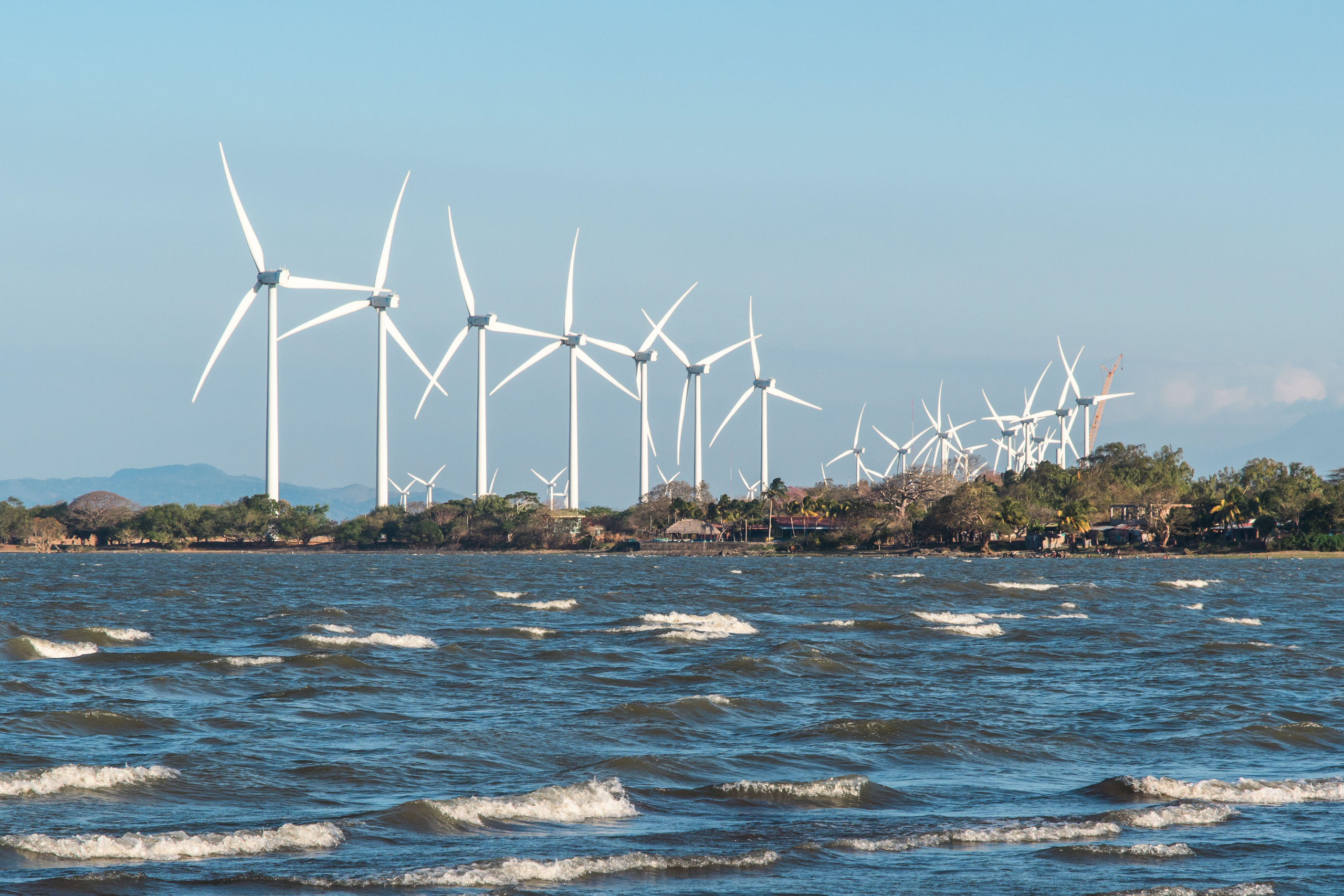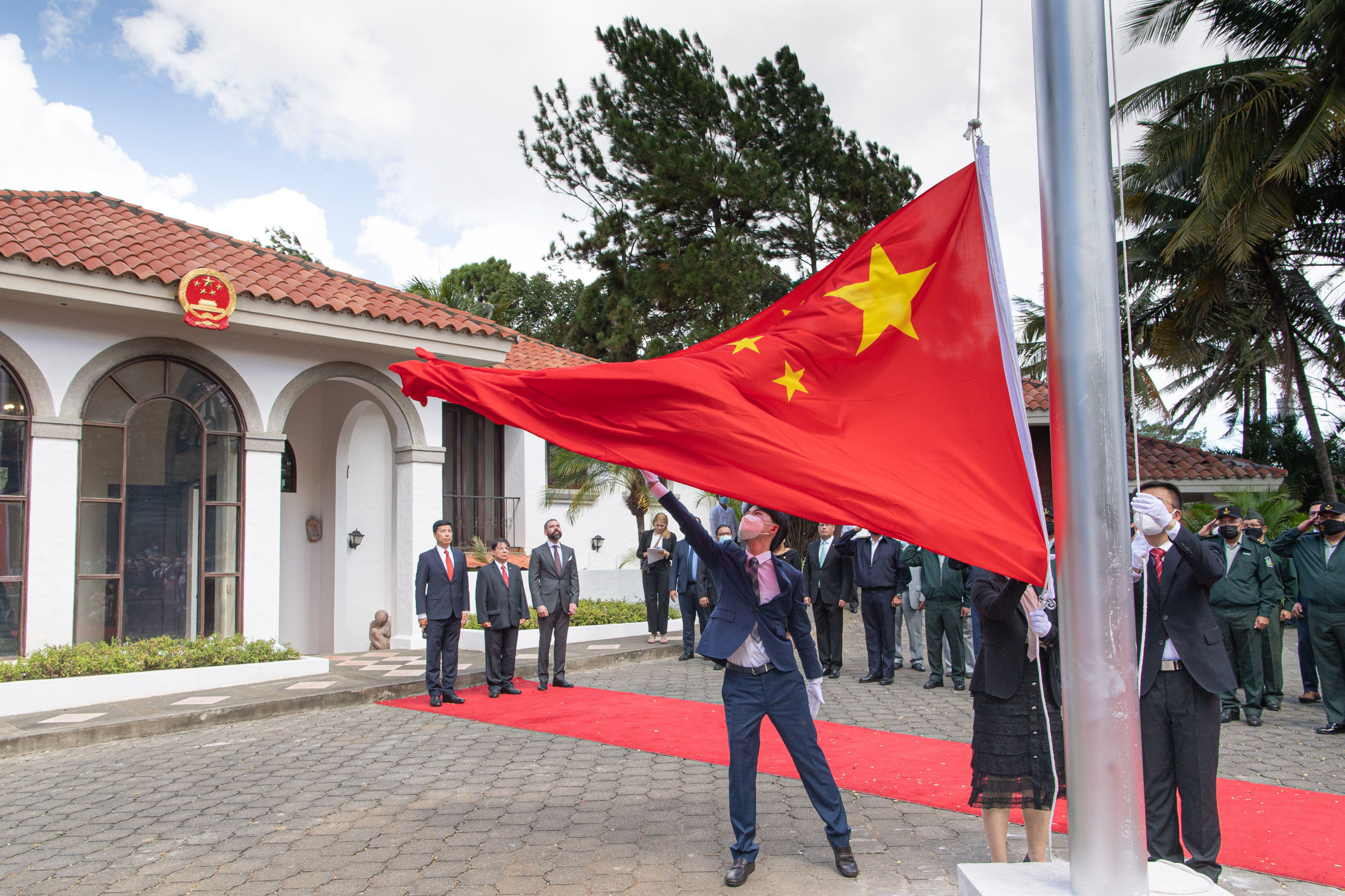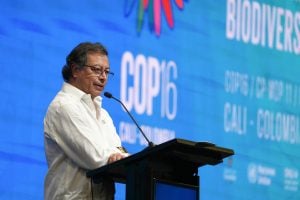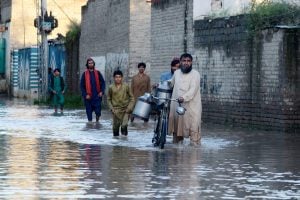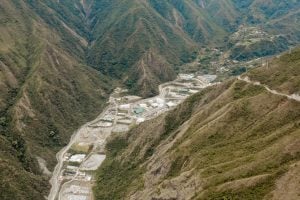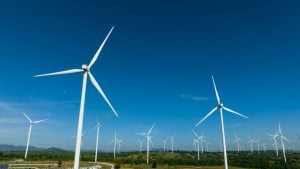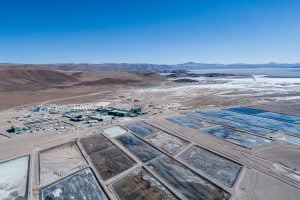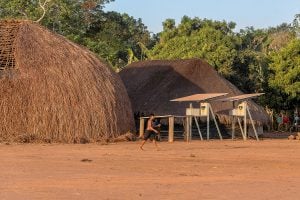In San Isidro, a mountainous and rural municipality in northern Nicaragua’s Matagalpa department, Chinese investment is helping to establish solar power – one of the latest arrivals in a wave of new projects announced in recent years, amid closer ties between the two countries.
At the end of June, a 112-hectare concession was granted for the construction of Enesolar AP-AS 1, one of three solar plants for which the Nicaraguan government has secured support from Chinese investors.
President Daniel Ortega’s son and advisor, Laureano Ortega Murillo, has said that the USD 92 million San Isidro project marks the beginning of new Chinese investments in the Central American country via a credit model. It follows another photovoltaic plant deal – El Hato in Ciudad Darío, also in Matagalpa – which will be built using a Chinese credit facility worth approximately USD 80 million. A third solar project worth a reported USD 70.5 million, in Masaya department, was announced in early October.
The design, supply and building contract for all three plants – which will reportedly have a total capacity of 200 megawatts – has been awarded to China Communications Construction Company (CCCC), one of China’s main state-owned construction firms, which has worked in more than 150 countries. The company’s expansion into the country comes after Nicaragua became the fourth Central American country to sign up to China’s Belt and Road Initiative in 2022, with Honduras becoming the fifth in 2023.
According to the International Energy Agency, Nicaragua supplies around 60% of its total energy from renewable sources, including wind, solar and geothermal, with biomass – an often contested renewable – accounting for the largest share, at roughly 40% of total supply. “China has the best photovoltaic technologies in the world,” Ortega Murillo said on announcing the projects. “This gives us a guarantee that the project will be carried out in the best way and will ensure its best performance.”
Around 60% of Nicaragua’s total energy supply is drawn from renewable sources, with biomass (41.8%) accounting for the largest share of generation as of 2022. The remaining 40% is supplied by oil imports.
In the electricity sector, biofuels (20.4%) make up the largest share of renewable generation, followed by geothermal (15.7%), hydropower (14.9%) and wind (12.8%), also as of 2022. Solar accounted for just 0.6% of generation that year, while the remaining 35.5% was generated from oil.
Local NGOs report that nearly 20% of Nicaragua’s energy is lost due to poor connections and obsolete systems, while many informal connections drive up distribution costs. Furthermore, distributors pay the highest energy prices in Central America, an expense that is ultimately passed on to consumers.
The country recently agreed to elevate its relations with China – which controls nearly 80% of the global solar energy supply chain – to the level of “strategic partnership”. It follows Nicaragua’s announcement in 2021 that it had resumed relations with China, breaking off its ties with Taiwan, and boosted by official visits and talks between President Ortega and Chinese leader Xi Jinping.
Since April 2018, Nicaragua has been facing a political and social crisis, punctuated by protests against Ortega’s repressive government. The ensuing violence has caused 355 recorded deaths and led to a tightening of state control. Consequently, the arrival of these solar projects has raised familiar concerns among some analysts, over the practical impossibilities of transparently monitoring their environmental and social impacts. The human and environmental rights evaluations offered here are therefore based on experiences with previous, similar projects.
Environmental impact
According to the government, the San Isidro plant will comprise 112,000 solar panels. On the condition of anonymity, sources tell Dialogue Earth that a similar area of land will be used for the El Hato plant. A private sector renewable energy expert (who like many in the country prefers to speak anonymously, for fear of government reprisals) told Dialogue Earth that building the two solar plants will require clearing approximately 200 hectares of forest.
Dialogue Earth asked Evan Ellis, a Latin America research professor at the US Army War College in Pennsylvania, about the Nicaraguan government’s track record on energy project concessions. He laments: “In terms of community benefits, environmental impacts, social conflicts and other repercussions – especially in a regime that lacks transparency, strong democratic institutions and the rule of law – the result has been disastrous.”
Dialogue Earth also spoke to Amaru Ruiz, president of the Fundación del Río. This NGO was shut down in Nicaragua for reporting on and criticising the government’s environmental record. It now operates from Costa Rica. Based on the regime’s usual approach to mining, Ruiz asserts, “there is no environmental or social impact study that stops the government’s interests.”
Ruiz adds that “the government has a long history of violating the rights of Indigenous communities and repressing dissenting voices, and this case will sadly be no different.”
Dialogue Earth attempted to speak to community leaders in Matagalpa, but they declined for fear of the consequences.
Green electricity grows, but price stays high
For more than a decade, the Nicaraguan government has generated incentives for foreign investment, harnessing the country’s abundant sunlight, wind and geothermal heat to bet on renewable energy.
In 2009, Nicaragua experienced a boom in wind energy investments of around USD 300 million. Four major wind farms were constructed in the south, on the strip of land between Lake Cocibolca and the Pacific Ocean. Funding was provided by a combination of domestic and international investors. For example, the Amayo wind farm was financed by a consortium of companies from Nicaragua, Guatemala and the US. This new wind energy region, which won praise from the UN secretary-general during a 2014 visit, has since attracted small, hydroelectric “run-of-river” projects, which take advantage of the natural channels of rivers.
The country went from 25% of its energy mix coming from renewable sources in 2007 to around 50% in 2016. Although the country continues to import fossil fuels, renewable energy now represents the largest share of the national energy mix, at around 60% of supply.
One way Nicaragua propels this is by offering incentives to both domestic and foreign investors in renewable energy, such as tax-free imports of capital goods, as well as tax exemptions on income and property. The private sector renewable energy expert elaborates: “It exempts renewable generation plants that are installed in the country from taxes. And for 10 years, they do not pay value-added tax; they do not pay income tax throughout the pre-investment, investment and a little bit of the operation phase.
“The projections [of the government] are that, by 2035, solar energy will triple to 3%,” the expert adds, although “the jewel we have is geothermal energy”.
While solar energy is inconsistent by nature and low rainfall in recent years has dampened Nicaragua’s hydroelectric potential, its extensive volcanic mountain range reliably powers the geothermal sector. The Maribios Range is part of the Pacific “Ring of Fire” and contains several active volcanoes. The government estimates Nicaragua’s geothermal potential to be 2,000 megawatts.
Nicaragua’s National Electric Transmission Company (Enatrel) seeks to transform the country’s energy mix by focusing on renewable energy with its 2022-2037 expansion plan. It is also strengthening the country’s transmission system. A raft of new green projects will be added, with the goal of maintaining an electricity mix of 70% renewable sources and 30% non-renewable.
The plan recognises the impacts of climate change – such as drought and impacts on crops – particularly on hydropower and bioenergy.
“The potential of renewables is enormous and there is now greater access to sites, meaning that the access routes have improved,” says the local expert.
However, the cost of electricity in Nicaragua is a challenge for households and businesses. Rates vary according to sector and have the potential to rise due to complex tariff and cross-subsidy arrangements. According to a Forbes study that referenced 2018-2022 data, the price of energy in Nicaragua was USD 0.33 per kilowatt hour (kWh). This made Nicaraguan electricity the most expensive in the region: in El Salvador the price was USD 0.20 per kWh, while the lowest was USD 0.14 in Costa Rica.
Nicaragua’s solar energy may triple by 2035, but the jewel we have is geothermal energyAnonymous private sector renewables expert
A 2015 study by the Economic Commission for Latin America and the Caribbean (ECLAC) said Nicaragua’s energy costs suppress the competitiveness of its industries and the wellbeing of its citizens: higher rates limit access to essential services, increase production costs and hold back economic growth. Furthermore, in a country where poverty rates are still high, ECLAC said disproportionately high energy prices increase the financial burden on families, especially in rural areas.
According to the private sector renewable energy expert, “there is no direct or coherent relationship between the price of electricity and the income level of the population or companies.”
China and Nicaragua open new chapter
Relations between China and Nicaragua have fluctuated for years. Ties established with Taiwan in 1930 were broken in favour of the People’s Republic of China in 1985, during Ortega’s first term as president. A diplomatic allegiance with Taiwan was re-established in 1990 by Nicaragua’s then-president Violeta Barrios de Chamorro, until the switch back to China in 2021 under Ortega once more.
Since 2021’s realignment with China, Ortega has referred to the relationship as a “Christmas gift” – and the fruits of these efforts have quickly materialised, in the shape of a free trade agreement (signed in August 2023) and a “strategic partnership”. Chinese companies soon announced investments for various Nicaraguan infrastructure projects worth approximately USD 850 million. This includes a USD 399.6 million loan to build Punta Huete international airport in the west, as well as investments in gas storage plants, trains, roads, a new commercial maritime route and housing projects for disadvantaged communities.
“These solar projects are explained by China’s industrial policy interests,” says Margaret Myers, a director of the Asia and Latin America programme at the Inter-American Dialogue, a think-tank. The solar industry is one of three industries that China has “prioritised”, she adds, alongside lithium batteries and EV manufacturing, known together in China as “the new three”.
“But Nicaragua has actually been a problematic investment environment for China,” Myers adds. The diplomatic back-and-forth with Taiwan has been an issue, as well as the collapse of the controversy-stricken Grand Interoceanic Canal project, designed to run through Nicaragua and rival the Panama Canal. Its concession had been won in 2013 by the Chinese businessman Wang Jing via his company, HK Nicaragua Canal Development Investment. Intended to endure for at least 50 years, the concession was revoked this year without explanation; Wang was also reported to have been declared bankrupt.
“What China is doing in Nicaragua”, Myers thinks, “is part of a broader strategy that we see throughout the region. Some of these projects seem very aligned with China’s economic objectives, which are to find markets, even in small countries like Nicaragua.”
